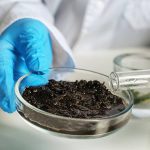Did you know that soil moisture is the most critical component of plant health? That’s right – without adequate soil moisture, plants will suffer from stress and eventually die. So, what exactly is soil moisture and why is it so important?
What is soil moisture?
In the AMS Glossary of Meteorology, soil moisture is defined as “the total amount of water, including the water vapor, in an unsaturated soil.”
In simple terms, Soil moisture is one of the most critical components of plant health. It is the water content in the spaces between soil particles that is available for plants to uptake and use for their growth. This water is essential for plants to photosynthesize, transport nutrients, and support their structure.
There are many factors that can affect soil moisture, including rainfall, irrigation, evaporation, and plant transpiration. It is important to monitor soil moisture levels so that you can optimize irrigation and prevent drought stress.
When soil moisture levels are too low, plants will wilt and their growth will be stunted. They may also become more susceptible to pests and diseases. Conversely, if soil moisture levels are too high, plants can suffer from root rot and other problems.

How does soil moisture affect plant growth?
Soil moisture is an important factor in plant growth. When the soil is too dry, plants will wilt and may die. When the soil is too wet, plants can become waterlogged and may also die.
The ideal soil moisture for plant growth is somewhere in the middle – not too dry and not too wet. This is because plants need water for photosynthesis, but they also need oxygen. If the soil is too wet, there will be too much water and not enough oxygen for the plant to breathe.
Soil moisture can also affect the number of nutrients that plants can absorb. When the soil is too dry, nutrients will not be able to dissolve and be taken up by the plant. When the soil is too wet, nutrients can be leached out of the soil and lost.
Therefore, it is important to monitor!
The benefits of soil moisture testing
If you’re a gardener, you know that healthy plants need two things: sunlight and water. But how much water do your plants really need? That’s where soil moisture testing comes in.
Soil moisture testing is a simple and easy way to test the moisture levels in your soil. With a moisture meter, you can quickly and easily see how much water your plants are getting and make adjustments accordingly.
There are many benefits to soil moisture testing, including:
- avoiding overwatering or underwatering your plants
- improving plant growth
- saving time and water
- reducing stress on your plants
Soil moisture testing is a quick and easy way to ensure that your plants are getting the right amount of water. If you’re not already testing the moisture levels in your soil, we highly recommend you start!
The best time to test for soil moisture
When it comes to testing for soil moisture, timing is everything. You want to make sure you test at the right time of day and in the right conditions. Here are a few tips to help you get the most accurate results:
- Test in the morning, before the sun has had a chance to heat up the ground.
- If possible, test after rain or watering. This will give you a more accurate reading of the moisture in the soil.
- Avoid testing in windy conditions, as this can dry out the soil and give you a false reading.
By following these tips, you can be sure you’re getting the most accurate reading of the moisture in your soil.
How often should you test for soil moisture?
If you’re growing plants, it’s important to know when and how often to test for soil moisture. Over- or underwatering your plants can lead to problems, so it’s important to get it right.
Here are a few guidelines on how often to test for soil moisture:
- If you’re growing plants indoors, you should test the soil moisture every 1-2 weeks.
- If you’re growing plants outdoors, you should test the soil moisture every 2-4 weeks.
- If you’re growing plants in a greenhouse, you should test the soil moisture every 1-2 weeks.
Remember, these are just guidelines – your plants may need more or less frequent watering depending on the type of plant, the size of the plant, the pot type, the climate, and other factors.
Making the most of your test results
If you’re like most gardeners, you probably want to get the most out of your soil moisture testing. After all, who doesn’t want to have healthier, more resilient plants?
luckily, there are a few things you can do to ensure that you’re getting the most accurate results from your soil moisture testing. Here’s how:
- Test your moisture levels before you water your plants. This will help you to avoid over- or under-watering them.
- Use a quality soil moisture meter to get an accurate reading.
- Be sure to take your samples at different depths. This will help you understand how deep the moisture level of your soil goes.
- Test your moisture levels regularly to keep your plants healthy and happy.
- Make sure to test your moisture levels at different times of the day. This will help you understand how the moisture level of your soil changes over time.
- Last but not least, you can use farm management software like Badoom to keep track of your soil test results.
Following these simple tips will help you to get the most out of your soil moisture testing and keep your plants looking their best.




